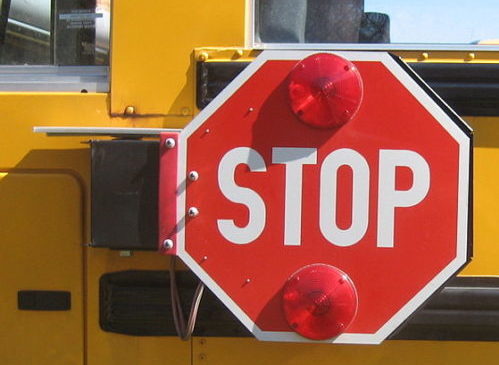
Are black public school students more likely to break the law than other students? When they break school rules, are police and arrest the way to discipline them? An Education Week Research Center analysis of data collected by the U.S. Department of Education suggests that, in practice at least, the answer to these questions is yes: “In 43 states and the District of Columbia, black students are arrested at school at disproportionately high levels…and one reason may be that black students are more likely than students in any other racial or ethnic group to attend schools with police.”
The conversation about the need for police in schools typically starts with worries about safety, often in the wake of an act of horrific violence like the Sandy Hook shootings. But in practice, school-based police get engaged in incidents much more typical of day-to-day life in schools and of children being children.
On May 10, 2016, after filling his lunch tray, a 14-year old student returned to the lunch line to pick up a carton of milk, the station reports. A Prince William County [VA] Police Officer working in the school accused [Ryan] Turk, who is black, of stealing the milk. He was handcuffed after police said he was disorderly.
The Education Week analysis asks us to consider if arrest is the right response for any child and whether Ryan’s being black meant anything.
Students have a significant number of in-school interactions with police every year. In the 2013–14 school year, almost 70,000 in-school arrests were reported. Black students were more likely to be arrested than their non-black schoolmates.
Sign up for our free newsletters
Subscribe to NPQ's newsletters to have our top stories delivered directly to your inbox.
By signing up, you agree to our privacy policy and terms of use, and to receive messages from NPQ and our partners.
When black students’ share of arrests is compared to their overall enrollment in all schools, the disparities are even more severe. […] Black students made up 17 percent of enrollment in schools that referred students to law enforcement, but were 26 percent of students who were referred. […] All of these findings mirror a host of persistent disparities for students of color, including higher rates of school suspensions, less exposure to experienced educators, and lower likelihood of access to rigorous coursework.
In the last years of the Obama administration, there was growing concern about the disparate impact this data demonstrates on children of color and its potential harm. There was some interest in working toward changing this pattern. Former Attorney General Eric Holder said, “A routine school disciplinary infraction should land a student in the principal’s office, not in a police precinct.” Even the National Organization of School Resource Officers, which trains in-school law enforcement agents, was in strong agreement with Holder. The organization’s executive director, Mo Canady, told Education Week, “I don’t care where the officer is coming from. They shouldn’t be placed in there just for the sake of having someone there. That’s a mistake.”
The weight of this mistake falls disproportionally on black children.
“Far too often when police are consistently present in black and brown communities, they criminalize behavior they wouldn’t in other places,” said Allison Brown, the executive director of the Communities for Just Schools Fund and a former lawyer for the U.S. Department of Justice. “Especially for young people, that is just devastating to their chances for success,” she said.
Under the new presidential administration, the emphasis appears to be shifting back toward a narrow “law and order” vision. President Trump has been clear about the carnage he sees taking place in our cities and the need for a more forceful response: “Our job is to make life more comfortable for parents who want their kids to be able to walk the streets safely. Or the senior citizen waiting for a bus. Or the young child walking home from school.”
Does this mean more police in our schools—or in predominantly black schools? As we see what specific policy directions emerge from the Trump administration, we’ll find out if this concern about law and order is balanced with similar concern about the implicit biases of our current practices.—Martin Levine













